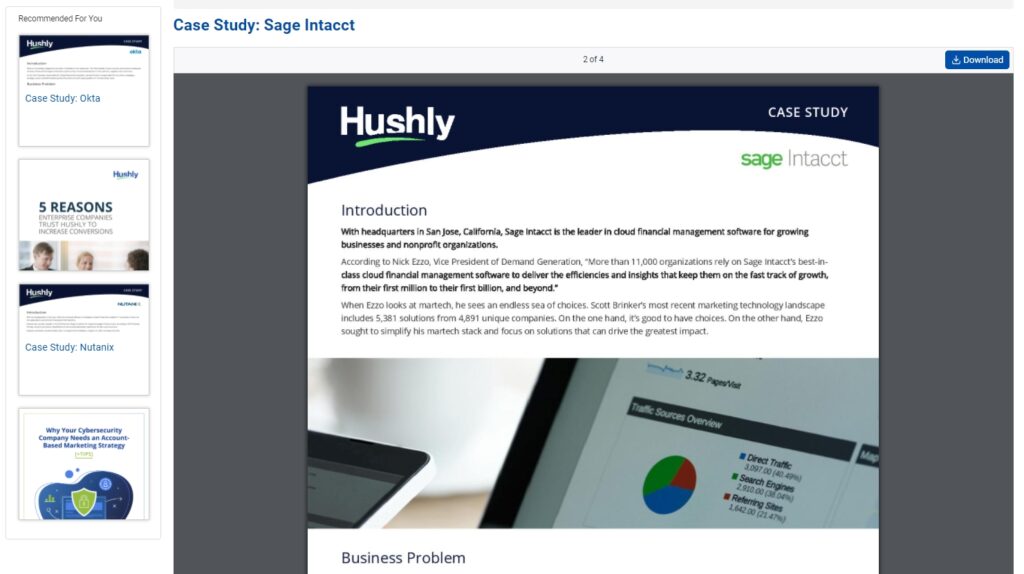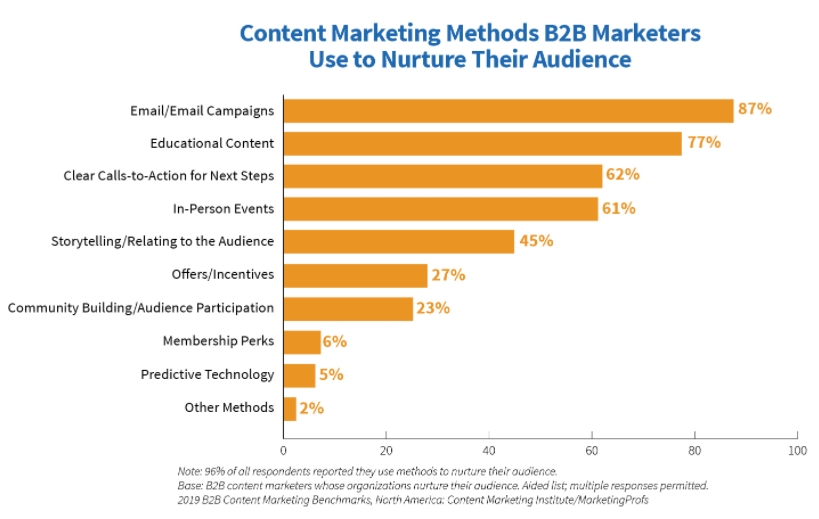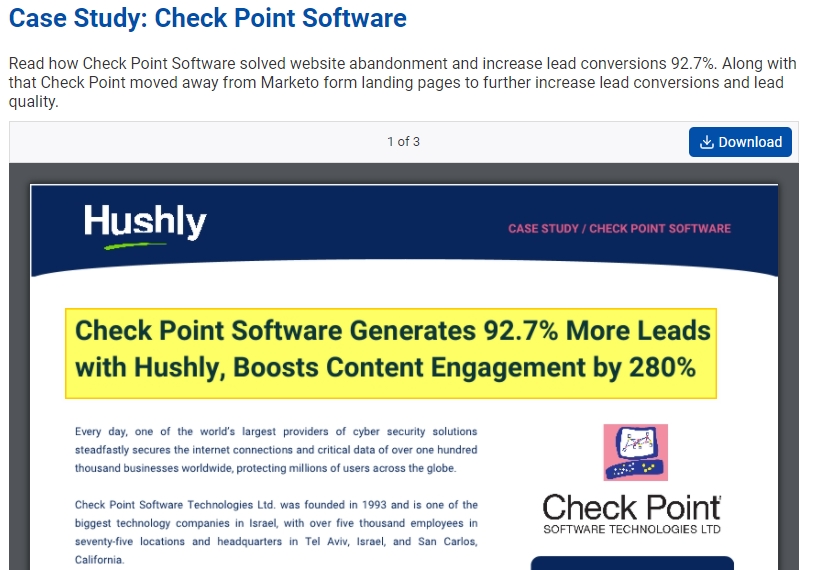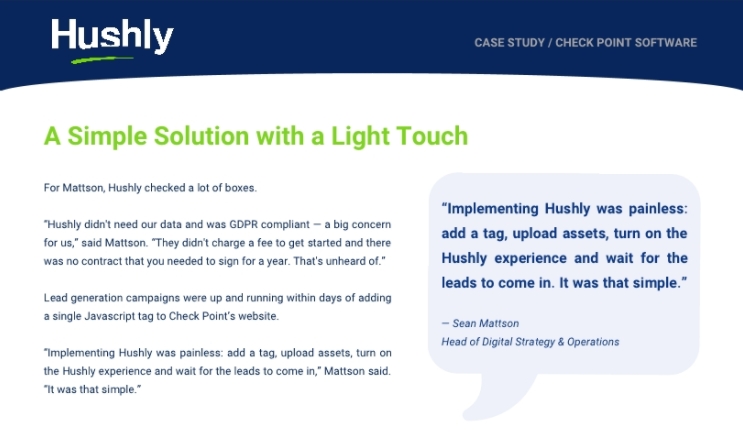The entire point of a B2B content marketing strategy is to share original content that helps you not only stand out as a thought leader in your industry, but that also helps you earn the trust of your target audience.
However, many online marketers tend to stick to what they know and only create content that comes in the form of landing pages, blog posts, or curated articles to share with their audience. What’s missing from this approach? Case studies that show your audience you follow the industry trends and are actively researching the industry yourself to find new solutions to your audience’s needs.
If you’ve never created your own case study before, it can be a bit daunting to get started. However, with the right B2B case study template, it can be much easier than you think.

What is a Case Study?
A case study is an in-depth report on a specific individual’s or business’s experience using a particular product or service. It also includes the outcome of the experience, which is usually measured by metrics.
For example, if you were working in the healthcare field, you could create a case study on a specific doctor’s experience using a certain product. You could then include the doctor’s name, the product they used, their experience using the product, and the metrics they measured to see if the product was effective.
Here’s a real-world case study put together by the Hushly team to outline a customer’s experience using Hushly to help them drive higher conversion rates.

In this example, the case study followed a simple B2B case study template:
- Introduction to the customer
- Their business problem
- Their chosen solution
- The results of implementing the solution
- A review of products/services
This example is extremely beneficial to those in the same boat as this particular client because it proves that the solutions Hushly provides actually work.
The Importance of Case Studies for Your B2B Content Marketing Strategy
B2B customers don’t want to be sold to – they want to be educated. Approximately 80% of business decision-makers prefer to get their information from an educational piece of content, such as a case study, than from a sales pitch.
Even more important is the fact that 47% of B2B customers will consume an average of three to five pieces of educational content before they even consider speaking with a salesperson, which is why approximately 77% of B2B marketers invest in the creation of educational content, such as case studies, white papers, etc.

7 Steps to Creating a Relevant and Engaging B2B Case Study Template
Sure, you can curate statistics and include them in your standard blogging content or via social media. However, that won’t necessarily help you stand out as the thought leader and innovator you are working so hard to be. Instead, you want to invest in creating custom educational content that helps give your audience a reason to pay attention to what you have to say.
Not quite sure where to begin? Start by building your own B2B case study template with these seven easy-to-follow steps.
1. Select your Topic/Headline
The first step is to choose a topic that is relevant to your target audience. This will help you formulate your case study’s headline – which should be clear and direct, so your audience knows exactly what will be covered.
Instead of trying to pique your reader’s interest by alluding to the results as you would in a blog post, you want to be direct with your headline and focus on a specific result.

You’ll also want to make sure you include a subtitle that further elaborates on the result you mentioned in your headline.
2. The Executive Summary
The executive summary is a short, one- to two-paragraph summary that presents the problem your customer faced, the solution they used, and the results they received.
3. Introduce the Customer
This section is where you introduce the customer and their business. You should include:
- The name of the company
- The industry they are in
- Location (city and state)
- Total number of employees
- Any notable awards or recognitions they have received in the past
Next, you should describe what the company does and how it differs from other companies in their industry. This will help your reader understand why they should care about this company. You can include any specific challenges the company is currently facing in this section as well.
4. The Business Problem
This section is where you talk about your customer’s problem and how that problem impacted their business. Try to be as specific as possible and use statistics to back up any claims you make. For example, if you are writing a case study about how one of your products helped increase a customer’s conversion rate, include the original conversion rate and the new conversion rate.
5. The Solution
In this section, you should talk about the product or service your customer chose to solve their problem. You should also talk about why they chose this particular product or service and what made it the best option for their business.

6. The Results of Implementing the Solution
This is where you talk about the results your customer achieved after implementing the solution. Show your reader the actual numbers, such as the conversion rate, and talk about how this increase or decrease impacted the business as a whole.
7. The Call to Action
In this final section of your case study, you want to include a call to action. What do you want your reader to do next? Should they contact you or visit your website? Do you want them to download a specific piece of content? Whatever it is, be direct and specific with your CTA.
Bonus Sections
Depending on the type of case study you are building, you may want to include additional sections, such as:
- Future plans (which would come before the CTA)
- Supporting visuals (sort of like an appendix)
- Additional quotes from participants
Give Your Audience Only the Best with Hushly’s Adaptive Content Hub
Hushly is a content marketing platform that helps businesses drive higher conversion rates by making it easy to create and share content that is relevant to their target audiences.
The Hushly adaptive content hub utilizes AI to help ensure that your consumers get only the most relevant content to address their thirst for information.
Curious how Hushly’s content hub can benefit your readers? Then request your custom content experience today!

